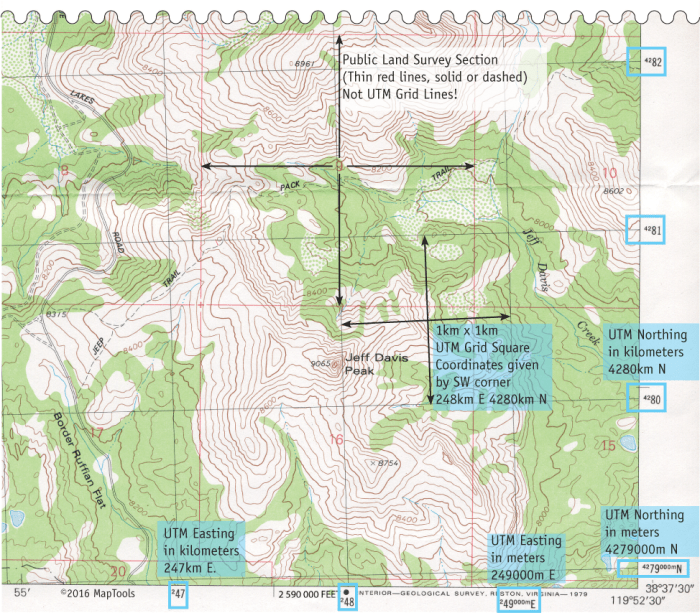Which statement describes gridlines on a map – Gridlines on maps, an essential cartographic element, play a pivotal role in map reading and spatial analysis. This comprehensive guide delves into the concept of gridlines, their types, and their applications, providing a clear understanding of their significance in various fields.
Gridlines serve as a coordinate reference system, enabling precise location identification and measurement on maps. They facilitate navigation, land surveying, and spatial decision-making, making them indispensable tools in a wide range of disciplines.
Definition and Purpose

Gridlines are a network of intersecting lines superimposed on a map that serve as a reference system for locating and measuring positions. They provide a framework for organizing and interpreting spatial data, facilitating accurate map reading and analysis.
Types of Gridlines
- Latitude Lines (Parallels):Run parallel to the equator and measure distances north and south of the equator.
- Longitude Lines (Meridians):Run perpendicular to the equator and measure distances east and west of the Prime Meridian.
- UTM Gridlines:A transverse Mercator projection grid system used for topographic maps, dividing the Earth into 60 zones.
- National Grid Lines:A rectangular grid system used in specific countries, such as the Ordnance Survey National Grid in the United Kingdom.
Coordinate Systems and Gridlines
Gridlines are integral to coordinate systems, which provide a systematic method for locating points on a map. Latitude and longitude coordinates correspond to specific gridline intersections, enabling precise location identification.
| Coordinate System | Gridline Intersection |
|---|---|
| Geographic Coordinates (Latitude, Longitude) | Intersection of latitude and longitude lines |
| Universal Transverse Mercator (UTM) Coordinates | Intersection of UTM gridlines |
| National Grid Coordinates | Intersection of national grid lines |
Labeling and Interpretation
Gridlines are typically labeled with their corresponding coordinates, making it easy to identify and locate specific points on the map. Different labeling conventions exist, such as degrees, minutes, and seconds for geographic coordinates or grid zone numbers and easting/northing values for UTM coordinates.
Applications of Gridlines, Which statement describes gridlines on a map
Gridlines are widely used in various fields, including:
- Navigation:Providing reference points for determining direction and distance traveled.
- Land Surveying:Establishing property boundaries and determining land areas.
- Spatial Analysis:Measuring distances, areas, and other spatial relationships between features on a map.
- Decision-Making:Supporting land-use planning, environmental assessments, and other decision-making processes that involve spatial data.
Advantages and Limitations
Advantages:
- Precise location identification
- Facilitated map reading and analysis
- Compatible with various coordinate systems
Limitations:
- Can distort distances and shapes on certain map projections
- May not be suitable for highly detailed or small-scale maps
- Can create visual clutter on complex maps
Clarifying Questions: Which Statement Describes Gridlines On A Map
What is the primary purpose of gridlines on a map?
Gridlines provide a coordinate reference system for precise location identification and measurement on maps.
How do gridlines assist in navigation?
Gridlines enable accurate navigation by providing a framework for determining distances and directions on maps.
What are the different types of gridlines used on maps?
Common types of gridlines include latitude and longitude lines, Universal Transverse Mercator (UTM) grid, and State Plane Coordinate System (SPCS) grid.

